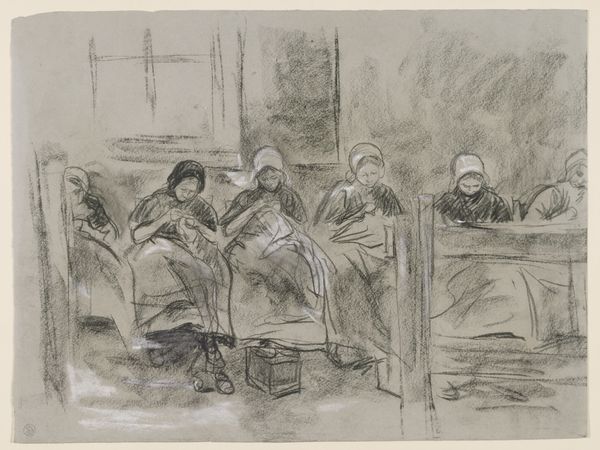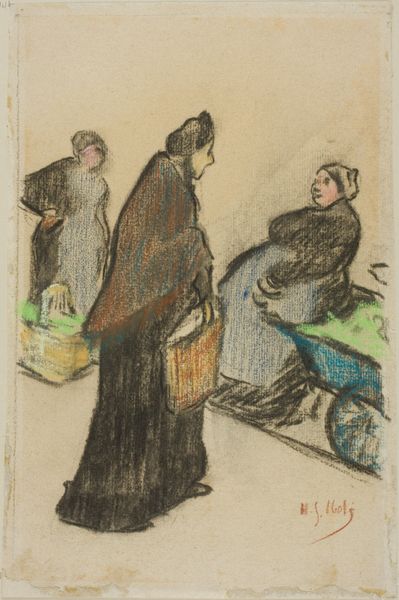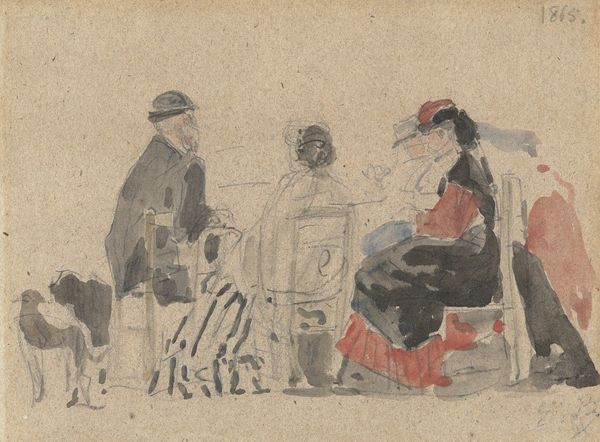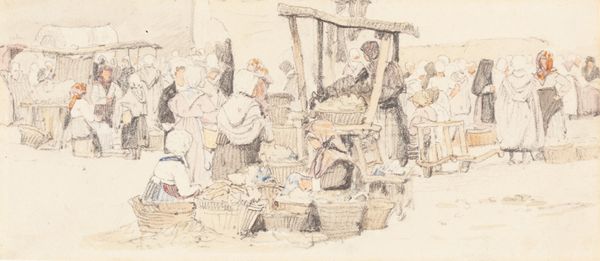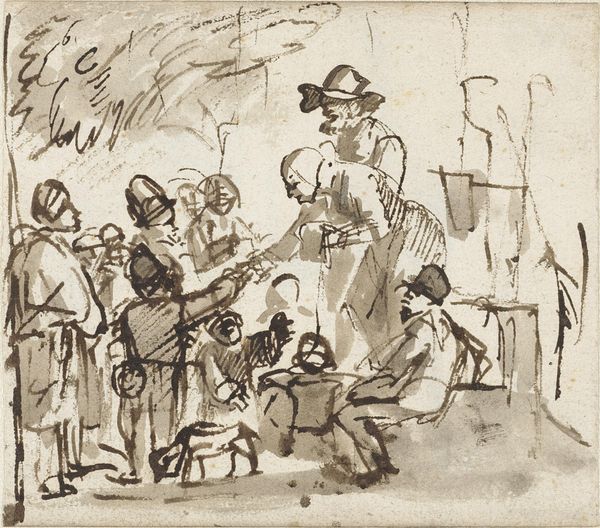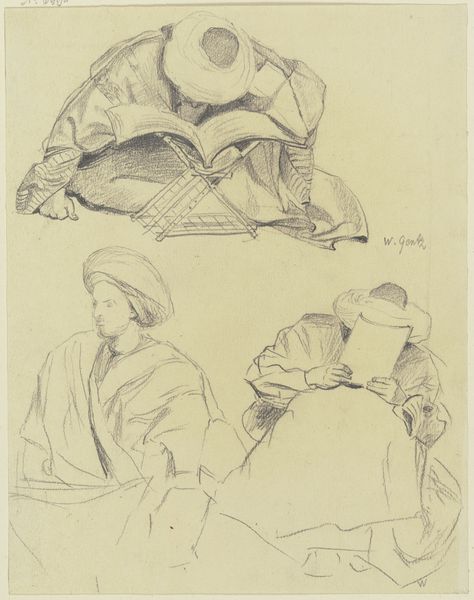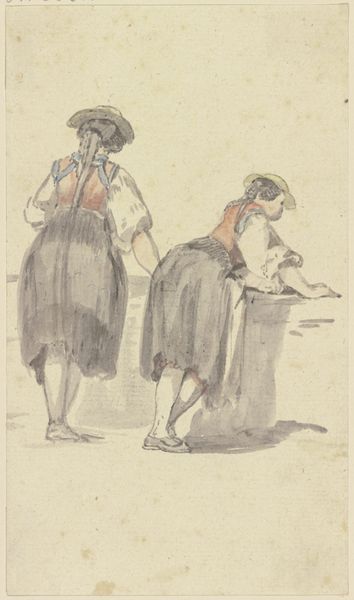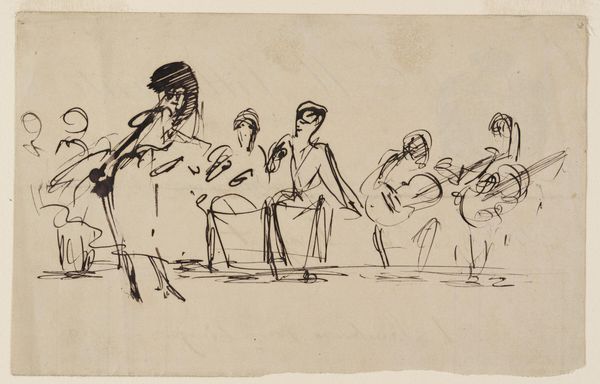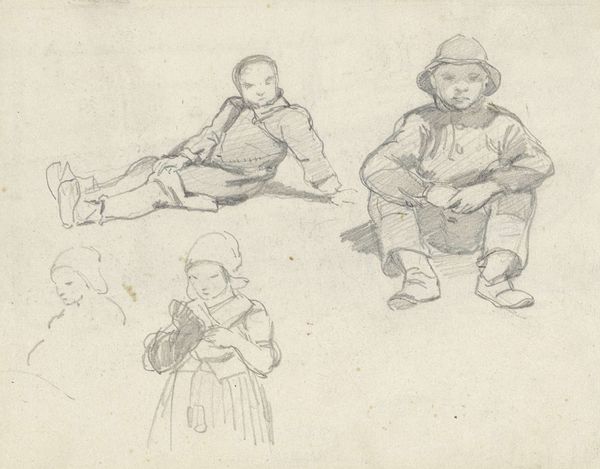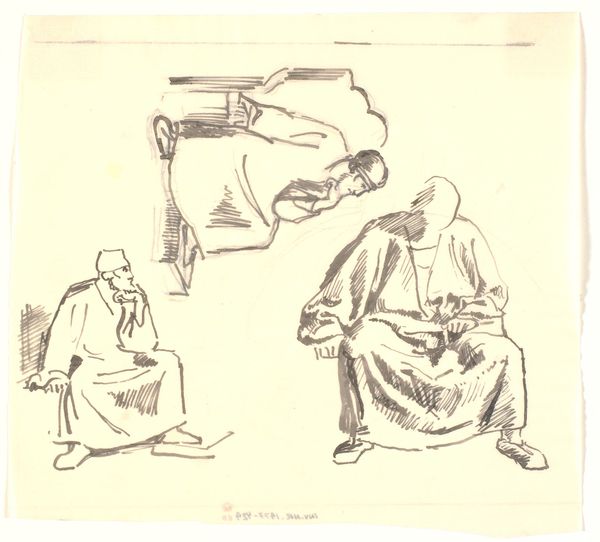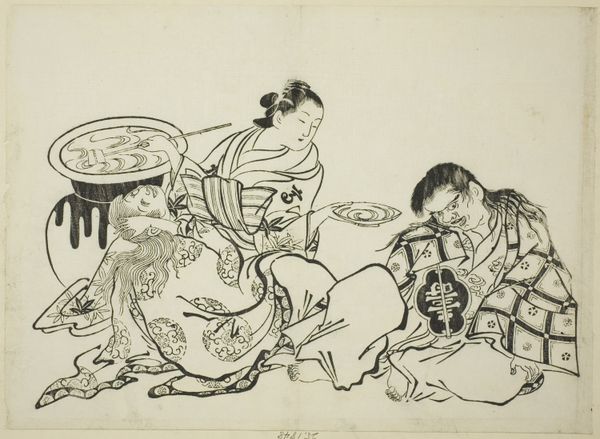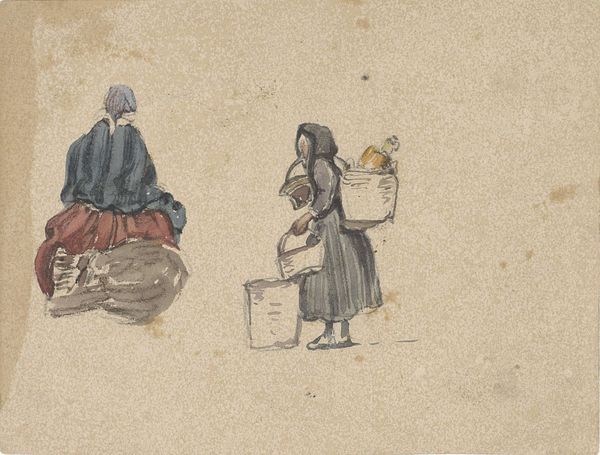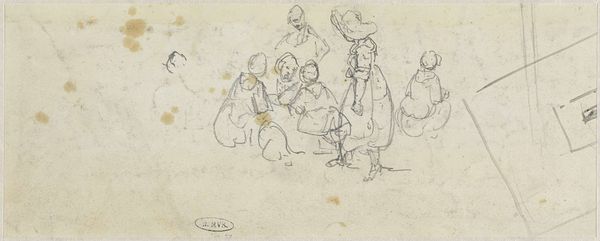
Copyright: Public Domain
Curator: This delicate watercolour is titled "Spinning Room in Schwalm," created by Jacob Happ in 1895. It's part of the Städel Museum collection. Editor: My immediate impression is one of muted colors and repetitive motion. There's something quite somber and subdued about the atmosphere, despite the presence of so many figures. Curator: Jacob Happ, though lesser-known, was painting during a time when genre painting, depicting everyday scenes, was shifting toward capturing specific social dynamics. He studied at the Düsseldorf Academy, reflecting that school’s focus on naturalism mixed with idealism. Editor: Exactly! This artwork depicts a group of women, all similarly dressed, engaged in spinning. I see themes of labour, perhaps even the constraints placed on women’s roles within a particular community. The identical caps are symbolic to me, and the downward gazes certainly reinforce that reading. Are they celebrating their skills, or being subjected to exploitation? Curator: Happ likely wanted to document the traditional crafts of rural communities. Genre paintings were becoming increasingly ethnographic; the artwork would have had an audience fascinated by supposedly authentic lifestyles removed from industrialized cityscapes. He's visually recording what he perceived as a vanishing world. Editor: That fascination is precisely what makes me uncomfortable. It borders on voyeurism and reinforces power imbalances, particularly the viewer as privileged observer gazing upon supposedly quaint, rural labourers. Who were these women, beyond subjects in a painter’s composition? I'm asking, does the artist attempt to give the figures dignity beyond mere subject matter? Curator: The medium itself - watercolor - is interesting here. Watercolor lends itself to fleeting impressions, mirroring the perceived ephemerality of these traditional crafts and potentially reinforcing a nostalgic narrative. He also utilizes line to give each women unique details of physiognomy; it humanizes the uniformity of labor. Editor: The sketch-like quality is striking, contributing to that sense of an immediate impression, and leaving so much open to interpretation and debate, but yes it remains locked to a vision and not voices of the subjects. It does underscore the value of critical inquiry when approaching art rooted in ethnographic documentation. Curator: Ultimately, Happ’s watercolour provides a window into a particular time and its anxieties, mediated through the artist's hand and presented for a viewing public steeped in its own biases. Editor: It urges us to delve deeper and explore the many untold narratives that resonate within.
Comments
No comments
Be the first to comment and join the conversation on the ultimate creative platform.
